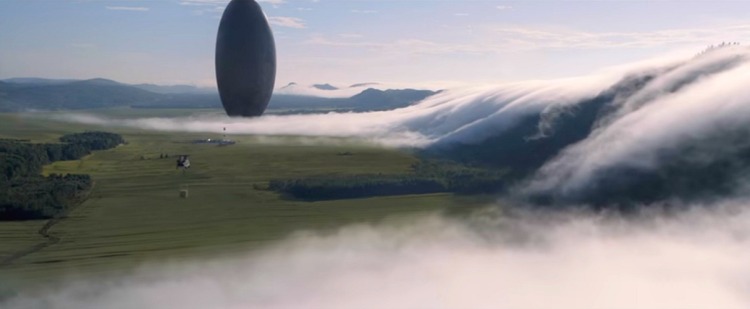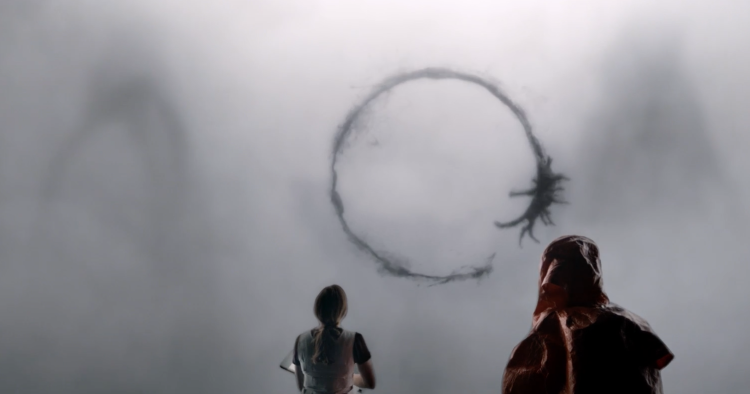
The amount of time it takes for me to recognize whether or not I’m going to love a film is a variable depending on the particular movie. Sometimes it takes some brilliant third act movement to get me really on a film’s side (Hullo there Arrival…) and sometimes it’s around the middle where I find myself more or less surprised by how I’ve been enjoying myself (What’s happening, John Wick). When it comes to La La Land, it wasn’t exactly the very first frame of the film where we see a jam-packed street of bright cars stuck in rush hour L.A. traffic, bright enough to understand how hot the sun must be bearing but not blinding to the point of being unpleasant to watch. It wasn’t when that opening shot leads into an uninterrupted take of a musical number (if there’s a hidden cut – and there usually is – I didn’t catch it) where the inhabitants of those stuck cars just start dancing in the lanes to their bombastically upbeat tune about the legend of Hollywood as a place for sunshiny happiness and where everybody walking down the street is a star in the making called “Another Day of Sun”, though it was very much close to that point with how it evoked the high-spirited breeziness of Jacques Demy’s The Young Girls of Rochefort. Not least in its selection of solid colored costumes leaping and jumping over dark chrome vehicles without missing a beat.
But no, the moment I realized that La La Land was going to be my kind of movie outright that even if it turned out to be bad, I was going to have fun rewatching it was exactly at the end of this sunshiny number where it bookends it with the film’s title card followed by another.
“Winter”.
A glib sense of humor about how the obnoxiously genial manner that first number set La La Land up that I was surprised I was the only one laughing at it (and then embarrassed enough at how quickly I responded that I was quiet). Like I said, even if La La Land turned out to be bad after that moment, I was on its side.

Thankfully La La Land was far from bad. I’d go so far as to call it one of the best times I had in the cinema. Writer/Director Damian Chazelle may have spent most of Whiplash baiting as much tension as he could (and sometimes really stretching for that tension), but La La Land is not similar to Whiplash by any means. Where Whiplash could be read as how painful art is to accomplish, La La Land is not not about that. But it spends so much of its runtime promising that the payoff, when you reach your dreams, will be worth any of the pain that comes to you. Chazelle’s script is so certain of the impending accomplishments of its leads Seb (Ryan Gosling), a jazz pianist who wants to own his own club, and Mia (Emma Stone), an aspiring actress, that even when the movie takes a turn for the bitter in its latter half, there’s never any doubt that they’ll get where they’re going eventually. Chazelle’s optimism for the characters he loves so much is infectious and it’s facilitated baldly through his love for two things: movies and jazz, which Mia and Seb both spitfire obsessive factoids and anecdotes on. Writing about something you’re genuinely enthusiastic about for a greater narrative about love and dreams works wonders. Who knew? In the meanwhile, Chazelle lets the movie play that out in its naked homages to musical artificiality – Linus Sandgren’s cinematography absolutely shameless in its nostalgic purples and reds of the magic sky because look how gorgeous it is, the production design of David Wasco and Sandy Reynolds-Wasco with the costume design of Mary Zophres looking for the thoroughline between 1950s Hollywood class and modern 2010s L.A. plausibility, and editor Tom Cross game enough to let long takes show-off how far the cinematic lie can go before Cross has to cut away from the master take – but it wouldn’t be as successful without Justin Hurwitz’s score. Or to me at least, since mileage on the score may vary because it is a blatantly shallow little thing in all its dramatic Romanticism even when it’s trying to be low-key about itself. But that’s exactly what makes it so engagingly junk food and contagiously memorable for me that I don’t really care that it’s not a complex music. My foot is still tapping to some of the melodies as I write this down as we speak, with motifs being emulated and called back from the five primary songs Chazelle and Hurwitz co-wrote from that opener “Another Day of Sun” to the melancholic “City of Stars”. And of course, to have the score act as a worthwhile compliment to both Mia and Seb as characters, Hurwitz injects as much jazz into the hopping notes (of course, it’s also the unchallenging kind of jazz that would probably piss the purist Seb off, so I can’t say it always works).
At least that’s how Chazelle gets that love for movies across in the script, but the creation of Seb and Mia as a romantic duo takes more than just writing. It takes the screen charisma of Gosling and Stone, already proving to be a deadly cute couple in pictures like Crazy, Stupid, Love and even a reward for those willing to make it through Gangster Squad. Their chemistry on-screen should not be a surprise to anyone and they’re not exactly bringing anything new to the idea of romantic foils in a musical, but it’s the right amount of talent and movie star recognizability that makes the romantic plot central to La La Land such an engaging confection to guide us through their characters’ wants and needs. Gosling, after spending a lot of recent years playing characters with heavy flaws to near unlikability, gets a character for whom he could turn that compulsive personality of Seb into double-edged charm. While Emma Stone is no newbie to grounded eartnestness, and when that comes to the film’s manifesto song “Audition (Here’s to the Fools That Dream)”, her emotiveness pays off wonderfully at selling the humanity behind La La Land‘s blatant movie gloss (it helps that this is one of several moments where Sandgren knows to completely turn off all light sources except what’s on the actors’ faces so THEY and the music can manipulate our feelings) and Mia’s potentials as an actress (Seb never has to sell us on his quality as a pianist – he gets an early showcase piano solo before we also see how underappreciated his talents are and how much of a prick he can be).

This was tough to write without turning it into a detail list of “this cool moment” and “this cool moment” (save for “Another Day in the Sun”), because La La Land is the type of movie that is just filled with moments dedicated to dazzling us and leaving a smile on our face if we’ll just meet it a little bit into the way. It’s shocking to me that I have gone this far without nudging to its showstopper finale where it goes 100 on artifice and recollects all the music it has allowed us to indulge in, but it’s also probably for the best to keep that under wraps, especially if you love musicals as much as yours truly. It’s the sort of ending that’s much more rewarding as a surprise and then it’s pretty obvious what note the movie will end on 15 minutes later. It’s not a perfect film, by any means. There’s a sort of problematic presentation in the conflict between the white Gosling and the black John Legend – who is a game and impressive actor for the limited screentime he gets – on the matter of jazz, though I don’t feel the movie misrepresents jazz so much as plays safe with it. And that comes from a lifetime of love for the genre from me, I don’t think Chazelle is less than authentic in his attitudes. And there is just the slightest possibility that Gosling and Stone might rub audience members the wrong way in their one-track mindedness. And it’s possibly the least challenging movie on movies you could see while still being impressed by its glamour, especially coming from the same year’s Hail, Caesar! – another movie about how fun movies are with more intelligence behind it.
But there’s also no other movie this year that I’d be more inclined to recommend to everybody I come across. It’s too accessible, joyous, and impressive not to be a great note to end the year on.
Hey all you people!
Hey all you people! La La Land s’marvelous!









